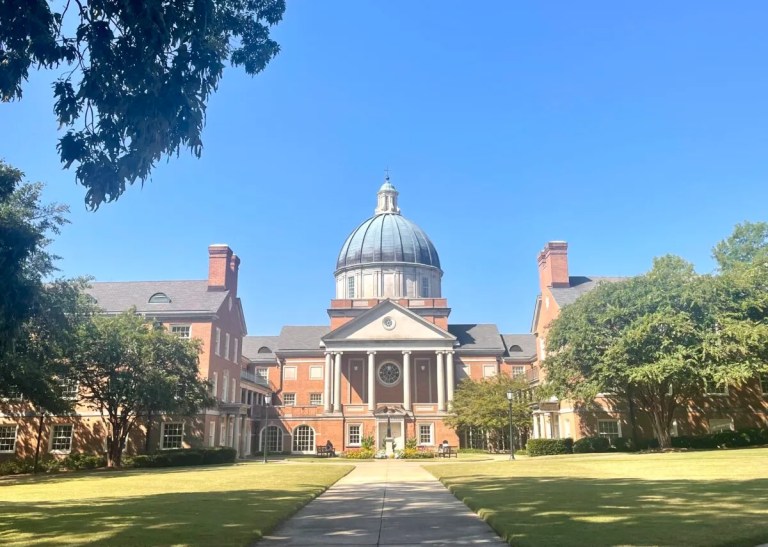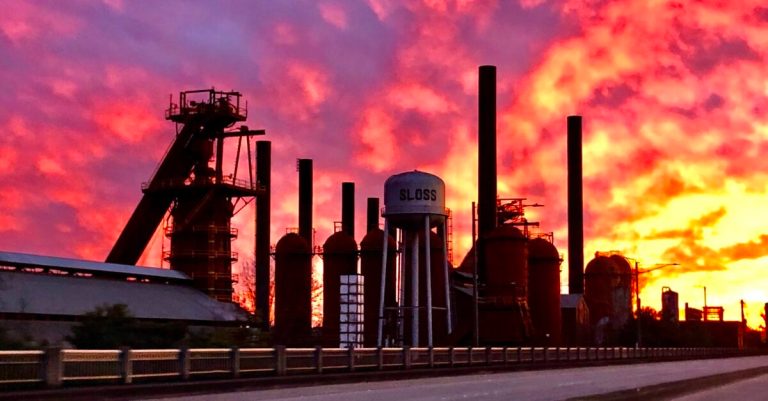This is what I-59/20 could look like! See examples from Atlanta and Dallas. (Part 3/3)
Reading time: 8 minutes
Sponsored
By Cary Estes

The March of the Millennials has replaced the White Flight of the 1960s and ‘70s. For several decades, urban areas throughout the United States – including Birmingham – steadily lost residential population to the surrounding suburbs. There were a variety of reasons for this, including racial and social issues. But the bottom line was that many downtowns were active only during business hours, with the buildings and streets becoming deserted beginning at 5:01 p.m. each day.
That has changed in recent years, as the Millennial generation seeks to combine the comforts of the suburbs (greenspaces, convenient options for dining and shopping, etc.) with the vibrancy and immediacy that can be found in a dynamic downtown. As a result, urban centers across the U.S. are thriving once again, and Birmingham is no exception. Just look at all the development that has taken place around Railroad Park and Regions Field since they were constructed, or the revitalization of the Avondale neighborhood into a popular entertainment district.
A number of Birmingham civic and business leaders believe the city can benefit tremendously from this trend if the elevated portion of the I-20/59 interstate that cuts through northern Birmingham either is lowered or rerouted. They contend this will allow for the development of millions of dollars’ worth of prime real estate that currently is being wasted. Businesses, restaurants, retail and greenspaces could be created, offering the compact work / life amenities Millennials are seeking. In addition, it would link the center city to the still-neglected northern neighborhoods, potentially providing a kick-start for economic development there as well.
“Cities that are growing and attracting that younger generation are concentrating on place-making,” said Darrell O’Quinn, executive director of the Move I-20/59 organization. “They’re redesigning and building their cities as great places to live and play, and not just to work.
“What we’re saying is, this is not just about a highway and moving vehicles. We should be viewing this as an opportunity to accomplish that goal of place-making and investing in our future. We believe that doing something like lowering the highway and capping it over would go a long ways toward accomplishing that.”
There are several examples of cities that have transformed ugly, space-consuming interstates and bridges by stitching them more discreetly into the fabric of downtown, from the waterfront in Cincinnati, Ohio, to the Inner Loop in Rochester, Mass. Two recent projects that perhaps best illustrate the potential of such changes can be found in Dallas and Atlanta:
Woodall Rogers Freeway / Klyde Warren Park, Dallas
In 2001, the aerospace giant Boeing chose Chicago over Dallas as the site of its new corporate headquarters. Dallas officials were told that one of the reasons for the decision was the lack of activity in the city’s downtown area.
“They said we needed a more vibrant downtown,” said Tara Green, a former vice president with the Dallas Convention & Visitors Bureau. “They said we needed more shopping, more residents, more of a sense of place. Not something where you get in and out of there quickly just for work. That jump-started the discussion about the need to change some things.”
At the top of the list was finding a way to remove the virtual barrier generated by the 8-lane Woodall Rogers Freeway, which effectively divided the downtown businesses and arts district from the uptown neighborhoods (sound familiar?). Since the highway already was slightly recessed below ground level, Dallas officials decided on a plan that involved installing a series of beams across a section of the freeway, and then putting a lid or “roof” on top of it. This allowed for the creation of 5.3-acre Klyde Warren Park, a $97-million project that opened in 2012.

“It’s basically a pretty cap over the top of the tunnel,” said Green, who is now president of Klyde Warren Park. “It’s completely changed that area. The park is a major recruiting tool to businesses around it. We’ve also seen an exponential rise in residents living downtown and uptown, because it’s all one area now.”

“Including construction, the Woodall Rogers Park Foundation Chairman estimates that the park has created more than $1 billion in economic value.” The Dallas Business Journal.
Green said land in that area was selling for approximately $80 per square foot when construction began on the park in 2009, but that earlier this year a building adjacent to the park sold for more than $500 per square foot. She said downtown residents now have a place to take their children and dogs to play, and that the nearby Booker T. Washington High School for the Performing and Visual Arts uses the park for P.E. classes.
And in another similarity to Birmingham’s situation, the Dallas Museum of Art is located next to the freeway and used to have its main entrance facing in the opposite direction. Once the park was created, however, the museum switched the main entrance to the opposite side looking out over the newly created greenspace.

“So what had been the freeway is now a beautiful open sculpture garden with an outdoor café and covered patio seating,” Green said. “It brings the park into the museum and the museum into the park. It’s really a gorgeous integration now, and not just the museum turning their back to the freeway, which is what they had to do before.”
Atlanta Connector (I-75/85) / Georgia Tech Fifth Street Bridge
As an urban institution, Georgia Tech has never had the luxury of a sprawling campus with ample greenspaces. The university is located in the concrete-and-asphalt landscape of Midtown Atlanta, with the 16-lane Atlanta Connector – aka I-75/85 – providing a boundary on the eastern edge of campus.
In desperate need of additional space, the university acquired some land on the opposite side of the interstate and, in 2003, opened Technology Square. The College of Business and the campus bookstore were moved to that location, with plans to develop a hotel and conference center along with some research facilities.

The problem was Technology Square was effectively cutoff from the rest of the campus. The Fifth Street Bridge was the most direct route across the interstate, and it was a standard four-lane roadway with narrow sidewalks, no dedicated bike path and absolutely no greenery.

So working with city and state officials as well as the Georgia Department of Transportation, a $10-million project was developed to replace the existing bridge with a much wider (300 feet) structure that emphasizes pedestrian and bike traffic. Vehicle traffic has been reduced to two lanes with comfortable greenspaces on either side, including rows of trees that eliminate the sight and sounds of the interstate below.

“We put the road on a diet and turned it into a park,” said Howard Wertheimer, Georgia Tech’s assistant vice president for capital planning and space management. “When you’re on that bridge now, you have no idea that you’re walking over 16 lanes of traffic. You don’t hear it or see it.

“There are a number of activities that take place on the bridge, and they’re all open to the public. Students hang out there on nice days. They have tailgates on football game days. They will close the bridge to traffic and have movie nights and events like the Taste of Atlanta. So it’s a vibrant area now.”
The bridge is also being credited with aiding the recent revitalization of the Midtown area and the success of Technology Square, which includes a 750,000-square-foot expansion schedule to be completed in 2018. According to the Midtown Alliance “There are 16 apartment, office and retail projects currently under consideration by the development review committee. These projects total more than $1.6 billion in investment.”
“I don’t think there’s any doubt that the Fifth Street Bridge has been a part of the economic development in Midtown,” Wertheimer said. “It’s really a wonderful connection from the core of campus to Technology Square. It just creates much more of a human landscape to the neighborhood.”
If you would like for Alabama to seriously consider alternatives for I20/59, similar to the examples shared above, please contact:
John R. Cooper, Transportation Director
ALDOT Administrative Office
P.O. Box 303050
Montgomery, AL 36110
334.242.6776
cooperjr@dot.state.al.us
Did you miss Part 1 – “Why Should you care about the I20/59 Debate? or Part 2 – Decisions About I20/59 Will Affect Neighborhood and Business Potential for the next 50 years.



